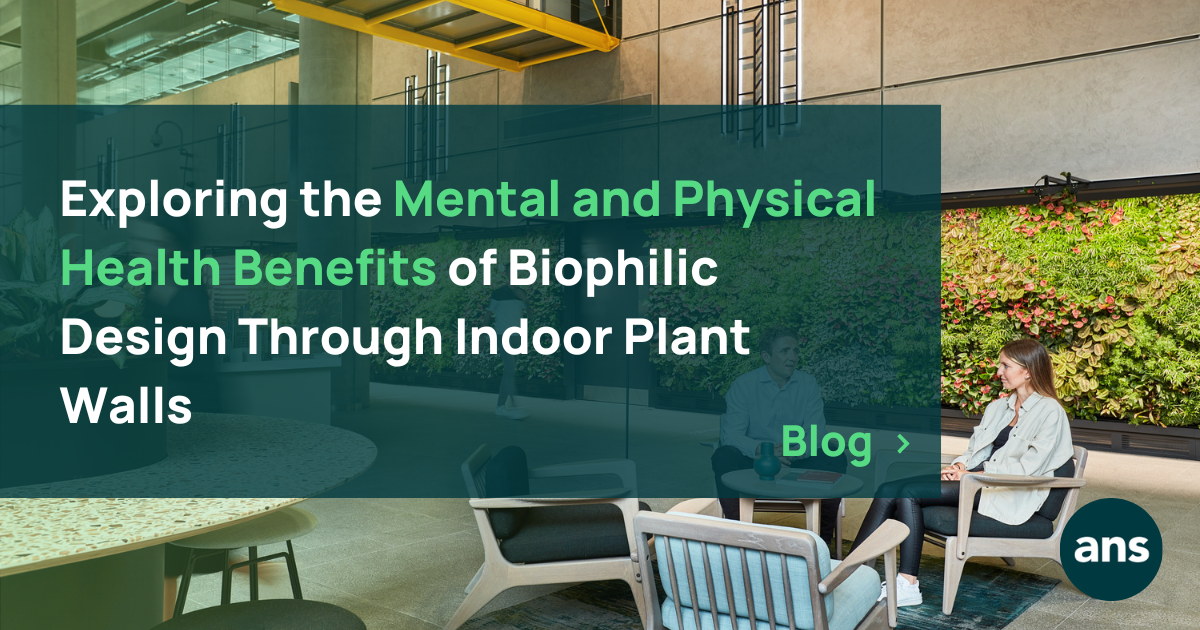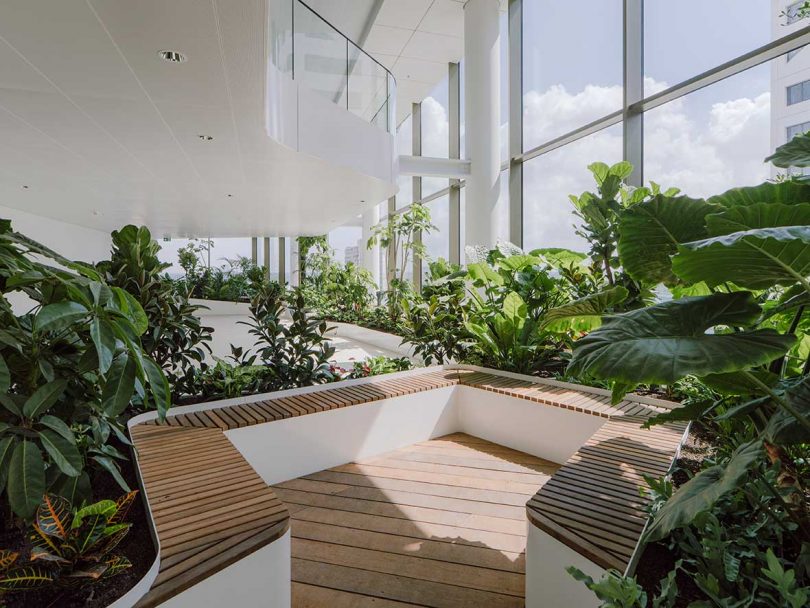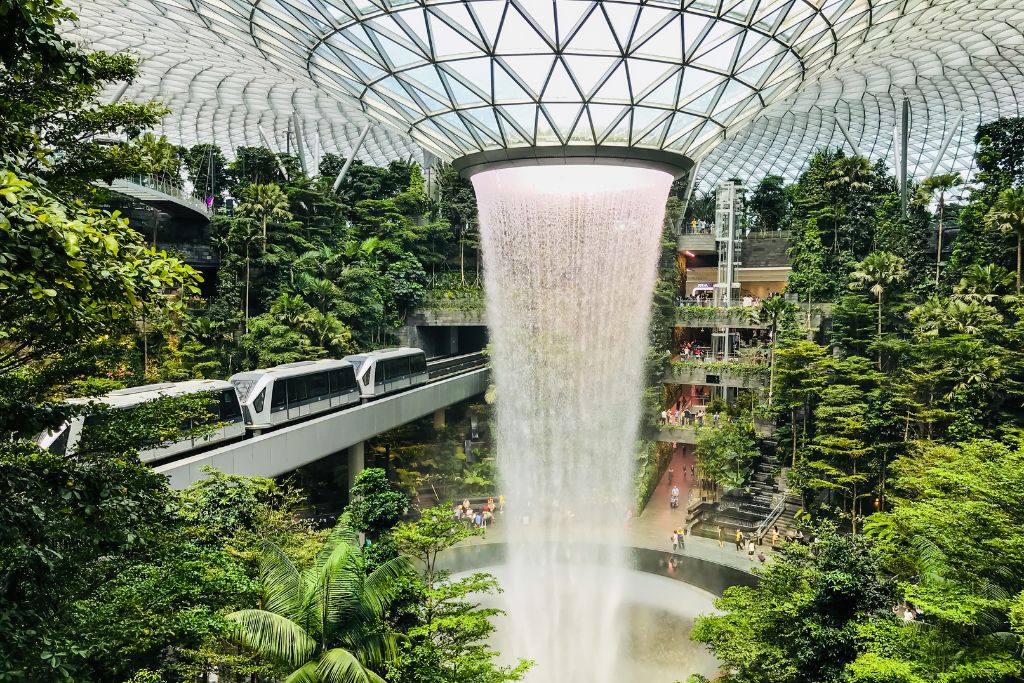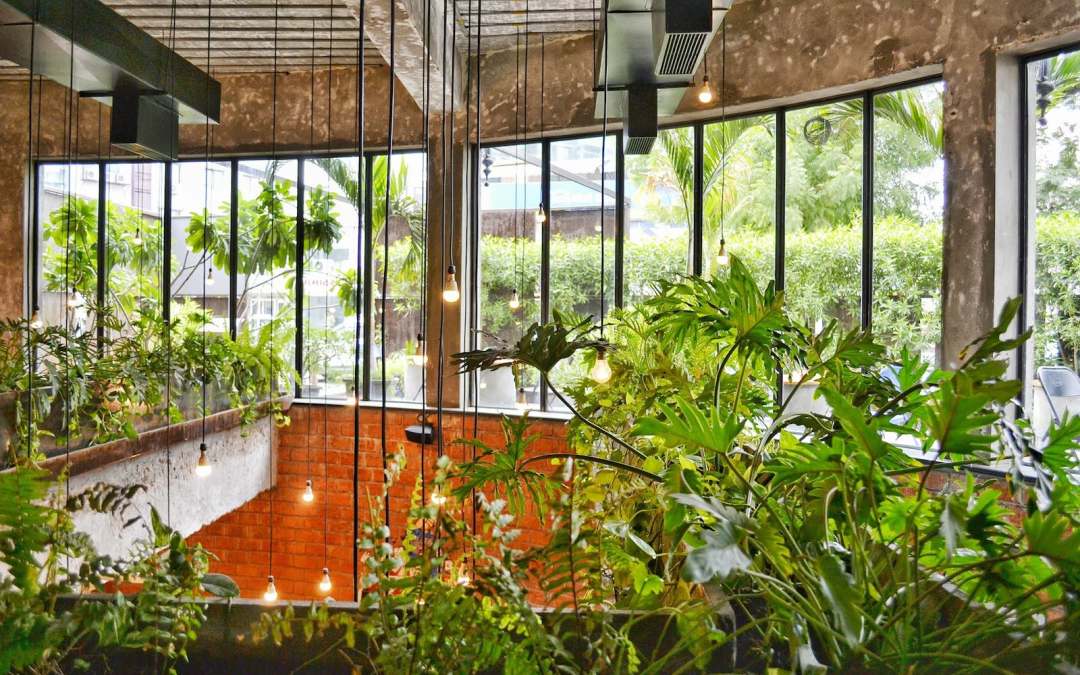Exploring the Benefits of Biophilic Design in Healthcare Settings
Incorporating biophilic design into healthcare settings transcends mere aesthetic enhancement; it represents a transformative approach that significantly improves the well-being of both patients and staff.
By integrating elements of nature into medical environments, healthcare facilities can facilitate healing, reduce stress, and enhance overall satisfaction.
This discussion examines the impact of biophilic design, outlining its benefits for patients and healthcare professionals, as well as practical methods for implementing these nature-inspired elements.
It highlights how fostering a connection to nature can revolutionize the healthcare experience.
Why is Biophilic Design Important in Healthcare Settings?
Biophilic Design represents a vital component of contemporary healthcare settings, as it incorporates natural elements to establish healing environments that significantly enhance the patient experience.
By prioritizing the connection between humans and nature, this design philosophy seeks to improve not only the aesthetic appeal of healthcare facilities but also the overall well-being and health outcomes for both patients and staff.
The integration of features such as natural light, indoor plants, and green spaces promotes comfort and emotional resilience, thereby creating healthcare spaces that are more inviting and supportive for all stakeholders involved.
What are the Benefits of Biophilic Design in Healthcare Settings?
The benefits of biophilic design in healthcare settings are numerous, enhancing not only the aesthetic appeal of medical facilities but also promoting a sustainable approach to improving patient experience and overall well-being. By incorporating elements such as natural light, greenery, and therapeutic spaces, healthcare environments can significantly enhance patient comfort and emotional health, ultimately leading to improved health outcomes.
Evidence-based design supports these findings, demonstrating that thoughtful layouts and design principles can positively influence stress reduction and recovery times.
For instance, studies indicate that patients recovering in rooms with windows overlooking gardens report lower levels of pain and anxiety compared to those without such views. Research conducted by Kaplan and Kaplan demonstrates that exposure to nature can lower cortisol levels, thereby aiding in anxiety reduction and enhancing overall mood.
In pediatric healthcare settings, the integration of playful, nature-themed designs has shown to engage children more effectively, resulting in increased satisfaction during their hospital stays. Furthermore, the implementation of indoor plants has been associated with improved air quality, creating a more pleasant atmosphere and potentially enhancing cognitive functions for both patients and caregivers.
How does Biophilic Design Affect Patients?
Biophilic design significantly impacts patients by creating healing environments that enhance their overall experience in healthcare facilities. This design approach emphasizes the integration of natural elements, such as indoor plants and natural light, which not only contribute to aesthetic appeal but also play a crucial role in improving emotional health and well-being.
By fostering a connection to nature, patients can experience reduced stress, improved mood, and a more comfortable atmosphere that facilitates healing and recovery. Ultimately, this approach leads to increased patient satisfaction and engagement.
1. Reduces Stress and Anxiety
One of the primary advantages of Biophilic Design is its capacity to significantly alleviate stress and anxiety among patients within healthcare settings. By integrating elements such as natural light, green spaces, and soothing water features, healthcare facilities can cultivate an environment that fosters relaxation and emotional resilience.
Research indicates that exposure to natural elements, even in indoor environments, can reduce cortisol levels, thereby creating a more serene atmosphere conducive to healing and improving the patient experience.
Studies have shown that the presence of indoor plants can lead to a 37% reduction in anxiety levels, as documented in publications within the field of environmental psychology. Furthermore, the incorporation of natural sounds, such as gentle rain or rustling leaves, has been associated with lowered stress levels, with patients reporting a significant enhancement in their emotional well-being.
The integration of biophilic elements not only promotes a connection to nature but also supports a holistic approach to health. The synergy between these design features and patient care can contribute to improved recovery times and overall satisfaction, establishing biophilic design as a crucial consideration for contemporary healthcare environments.
2. Improves Mood and Mental Well-being
Biophilic Design is integral to enhancing mood and mental well-being for patients within healthcare settings. By incorporating elements such as natural light, greenery, and nature-inspired artwork, facilities can create environments that uplift spirits and promote a sense of tranquility.
Research indicates that patients who are exposed to biophilic elements report higher levels of satisfaction and emotional resilience, both of which are crucial for the healing process and overall health outcomes.
Studies demonstrate that interaction with natural environments can significantly reduce stress levels, alleviate anxiety, and improve mood, which may lead to faster recovery times. For instance, a study published in the journal ‘Environment and Behavior’ revealed that patients in rooms with views of nature experienced shorter hospital stays and required less pain medication.
The principle of user-centered design is essential in this context, as it ensures that healthcare spaces are not only functional but also responsive to the emotional needs of patients. Incorporating feedback from users, including patients and healthcare providers, can inform the development of environments that effectively support mental well-being and foster resilience during challenging circumstances.
3. Speeds up Recovery Time
Research indicates that Biophilic Design can substantially accelerate recovery times for patients in healthcare environments. The integration of elements such as natural daylight exposure, therapeutic lighting, and the use of natural materials has been associated with enhanced healing processes and expedited recovery from medical procedures.
By creating environments that prioritize patient comfort and well-being, healthcare facilities can improve overall health outcomes and enhance patient satisfaction.
This approach is substantiated by numerous studies that examine the significant positive effects of natural views and improved air quality on health recovery. For example, environments that incorporate greenery not only alleviate stress but also elevate mood, which can result in decreased pain levels and reduced duration of hospital stays.
Implementing evidence-based design practices allows healthcare professionals to utilize data-driven strategies to develop spaces that promote healing. These findings emphasize the importance for contemporary healthcare facilities to integrate biophilic elements, customizing their design to facilitate patient recovery through holistic, nature-inspired environments.
4. Increases Patient Satisfaction
Incorporating biophilic design in healthcare settings leads to a significant increase in patient satisfaction, as environments that prioritize natural elements greatly enhance comfort and emotional well-being.
By employing design principles that emphasize the integration of nature—such as indoor gardens, abundant natural light, and soothing color psychology—healthcare facilities can create welcoming and supportive atmospheres that resonate with patients and their families.
Numerous studies have demonstrated that patients treated in facilities with ample natural light and greenery report lower stress levels and faster recovery times.
For instance, a survey conducted at a hospital featuring a therapeutic garden indicated that over 80% of patients felt more relaxed and satisfied with their care experience.
Additionally, a case study involving a healthcare facility that incorporated large windows and views of nature documented a 25% increase in overall patient feedback scores.
These findings illuminate how thoughtful design features not only enhance the aesthetic appeal of healthcare environments but also play a crucial role in fostering a sense of well-being among those receiving care.
How does Biophilic Design Affect Healthcare Staff?
Biophilic design plays a critical role in enhancing the well-being of healthcare staff, effectively reducing burnout rates in high-pressure environments.
By integrating design elements that promote a connection to nature—such as green spaces, ample natural light, and therapeutic landscapes—staff members can experience improvements in mental health, emotional resilience, and overall job satisfaction.
This positive impact on staff well-being subsequently enhances the quality of care provided to patients, fostering a beneficial feedback loop that supports the well-being of both healthcare professionals and those they serve.
1. Reduces Burnout and Fatigue
Biophilic design has demonstrated its effectiveness in reducing burnout and fatigue among healthcare staff by fostering supportive and restorative environments. The inclusion of elements such as natural views, indoor plants, and access to outdoor spaces enables staff to recharge both emotionally and physically during their shifts. This connection to nature promotes a sense of calm and balance, allowing healthcare professionals to maintain their well-being while providing high-quality patient care.
A study conducted by the University of Queensland found that workplaces incorporating biophilic elements experienced a 20% reduction in stress levels among employees. Additionally, further research has shown that exposure to natural light and greenery not only enhances mood but also improves productivity and job satisfaction. For healthcare professionals, who frequently encounter significant pressures, these restorative features offer essential relief that can counteract the negative effects of prolonged stress.
By prioritizing biophilic design within hospital settings, healthcare organizations can substantially improve the emotional resilience and overall health of their staff, ultimately leading to enhanced patient outcomes.
2. Increases Productivity and Job Satisfaction
The integration of Biophilic Design is associated with increased productivity and job satisfaction among healthcare staff. By creating thoughtfully designed spaces that incorporate natural light, comfortable layouts, and access to nature, staff members are more likely to feel engaged and motivated in their work environments.
This enhanced emotional resilience not only benefits healthcare workers but also translates into improved patient care, highlighting the interconnectedness of staff well-being and patient outcomes.
Research indicates that individuals working in environments enriched with biophilic elements report a 15% increase in overall productivity metrics. For example, testimonials from nurses demonstrate that the presence of greenery and sunlight significantly reduces stress levels, thereby enhancing their efficiency and focus during extended shifts.
Healthcare facilities that have implemented such designs often experience lower turnover rates and higher staff morale, as employees perceive their work environments as more inviting and rejuvenating.
Clearly, the incorporation of biophilic principles not only cultivates a healthier workplace culture but also improves the quality of care provided to patients.
3. Improves Mental and Physical Health
Biophilic design significantly enhances the mental and physical health of healthcare staff by creating environments that prioritize their well-being and comfort. By integrating elements such as natural materials, calming colors, and access to green spaces, staff members can experience reduced stress levels and improved emotional health, thereby fostering a more positive workplace atmosphere.
This holistic approach to design acknowledges the critical role that staff well-being plays in delivering patient-centered care.
Research demonstrates that the incorporation of biophilic elements in healthcare settings not only alleviates feelings of burnout but also promotes enhanced concentration and productivity among employees. Studies have indicated that environments featuring natural light and greenery contribute to lower levels of anxiety, which can directly impact the quality of care delivered to patients.
Such supportive atmospheres encourage collaboration and teamwork, both of which are essential for a thriving workplace.
Creating an environment that prioritizes wellness ultimately reflects in staff retention rates and job satisfaction, underscoring the importance of well-designed spaces in shaping effective healthcare systems.
What are the Elements of Biophilic Design in Healthcare Settings?
The elements of biophilic design in healthcare settings include a range of natural and architectural features that enhance the overall environment for both patients and staff. These elements, such as natural light, indoor plants, water features, and nature-inspired art, are intended to improve emotional health and foster healing environments that support overall well-being.
By intentionally integrating these components into the design of healthcare facilities, architects and designers can promote a robust human-nature connection that positively impacts all individuals within the space.
1. Natural Light and Views
Natural light and views are essential components of Biophilic Design that significantly enhance the experiences of both patients and staff within healthcare environments. By ensuring sufficient exposure to daylight and establishing visual connections to the outdoors, healthcare facilities can promote a sense of openness and tranquility.
Research indicates that natural light not only elevates mood and alleviates stress but also positively affects recovery times and overall well-being.
Studies demonstrate that environments abundant in natural light can reduce patient anxiety levels by as much as 22%, highlighting the considerable influence of light on emotional health. The incorporation of large windows, skylights, and therapeutic garden views are effective design strategies to optimize natural light in hospitals.
Facilities that prioritize these elements frequently report shorter hospital stays and a decreased reliance on pain medication, emphasizing the physical comfort provided by such designs. For example, a study conducted by the University of Illinois revealed that patients in rooms with natural light required 21% less pain medication, thereby enhancing their overall recovery experience.
2. Indoor Plants and Greenery
The incorporation of indoor plants and greenery within healthcare settings is a crucial component of Biophilic Design, as these elements contribute to improved air quality and foster a calming atmosphere. Research indicates that the presence of plants can enhance mood, promote relaxation, and even expedite recovery times for patients.
By integrating greenery into the design, healthcare facilities can create a more inviting and supportive environment for both patients and staff.
Various types of indoor plants, including peace lilies, snake plants, and pothos, not only purify the air but also evoke a sense of tranquility and comfort. These plants have been demonstrated to absorb toxins and release oxygen, which can lead to improved overall health outcomes.
Thoughtful design concepts that incorporate plants into waiting areas, patient rooms, and hallways can establish visual interest and a connection to nature. Such integrations can significantly reduce stress levels while cultivating a healing atmosphere that benefits all individuals within the space.
3. Natural Materials and Textures
Utilizing natural materials and textures in biophilic design significantly enhances the aesthetic appeal and emotional resonance of healthcare environments. Materials such as wood, stone, and organic textiles contribute to a sense of warmth and comfort, thereby creating healing environments that resonate with the human experience. This approach not only elevates aesthetics but also fosters a connection to nature, reinforcing the principles of well-being and sustainability in healthcare design.
By incorporating sustainable materials into healthcare settings, professionals can have a substantial impact on interactions between patients and staff. For example, the use of soft textiles can enhance the tactile experience, making furnishings more inviting and alleviating anxiety during visits.
Furthermore, the employment of natural stone or reclaimed wood in flooring can evoke a grounding sensation, promoting feelings of safety and stability. Beyond physical comfort, these thoughtfully selected materials can elicit positive emotional responses, ultimately leading to improved patient outcomes and enhanced staff morale.
A well-designed space that honors nature cultivates a reciprocal relationship between individuals and their environments, thereby creating a more therapeutic atmosphere.
4. Water Features
Water features play a critical role in biophilic design, contributing to the creation of calming soundscapes that promote relaxation and well-being within healthcare environments. The gentle sound of flowing water has been shown to reduce stress and anxiety for both patients and staff, fostering a serene atmosphere that supports healing and emotional health.
The integration of water elements into the design not only enhances aesthetic appeal but also cultivates a more profound connection between individuals and nature.
Among the most commonly utilized water features are fountains, which can vary significantly in size and style to accommodate different spaces, ranging from small, tabletop models to larger, floor-standing installations. These fountains produce soothing sounds and serve as focal points that encourage mindfulness, providing a distraction from pain or discomfort.
Aquariums, populated with colorful fish and aquatic plants, further enhance waiting rooms and patient areas by offering vibrant visual stimulation that can elevate mood.
The strategic incorporation of these features can effectively transform clinical spaces into calming retreats, ultimately improving the overall experience for all individuals who enter.
5. Nature-Inspired Art and Design
Nature-inspired art and design are essential elements of biophilic design, significantly contributing to the aesthetics of healthcare environments while enhancing emotional well-being and patient experience. By incorporating artwork that reflects natural themes and landscapes, healthcare facilities can establish a visually engaging atmosphere that resonates with both patients and staff. Such artistic expressions foster a sense of connection to nature, thereby promoting comfort and overall well-being.
A prominent form of nature-inspired art is murals, which can transform institutional walls into vibrant representations of serene landscapes or calming flora. Additionally, sculptures crafted from natural materials or designed to emulate organic forms can enhance outdoor spaces, encouraging patients to engage more fully with their surroundings.
Numerous healthcare settings have successfully integrated these artistic forms; for example, the use of large-scale wall murals in children’s hospitals has been shown through research to significantly reduce anxiety and improve patient mood.
Furthermore, facilities featuring landscaped gardens interspersed with sculptures have reported enhanced healing experiences for both patients and visitors, underscoring the profound impact that thoughtfully designed art can have on emotional health and healing.
How to Incorporate Biophilic Design in Healthcare Settings?
Incorporating Biophilic Design in healthcare settings necessitates a strategic approach that harmonizes design principles with the needs and well-being of both patients and staff. This process requires collaboration among architects, designers, and healthcare professionals to ensure that the integration of natural elements is both functional and visually appealing.
By prioritizing community engagement and user-centered design, healthcare facilities can develop environments that enhance emotional health and facilitate the healing process.
1. Collaborate with Designers and Architects
To effectively incorporate Biophilic Design, it is essential to collaborate with designers and architects who possess a thorough understanding of the specific needs inherent to healthcare settings. These professionals bring valuable expertise in creating environments that foster well-being while seamlessly integrating natural elements.
Through collaborative efforts, stakeholders can ensure that design principles align with patient-centered care and the therapeutic objectives of the facility.
Successful case studies illustrate how such collaboration can facilitate the development of transformative healthcare environments. For example, in a recent project, a hospital engaged landscape architects to design healing gardens that are accessible from patient rooms. This initiative not only enhanced the aesthetic quality of the space but also provided patients with soothing natural vistas, ultimately supporting their recovery process.
Another noteworthy instance occurred in a community health center, where designers and medical professionals worked together to create a layout that maximizes natural light and ventilation. This collaboration resulted in significant reductions in patient anxiety and improved overall satisfaction.
These partnerships highlight the substantial impact of integrated design thinking on healthcare environments.
2. Conduct Research and Gather Feedback
Conducting research and gathering feedback is essential for the successful implementation of biophilic design in healthcare settings. Understanding the preferences and needs of both patients and staff can guide the selection of appropriate biophilic elements that enhance the overall experience.
By prioritizing user-centered design, healthcare facilities can effectively address specific emotional and physical needs, ultimately leading to improved health outcomes and increased patient satisfaction.
To effectively collect this valuable information, it is crucial to employ a variety of methods. Surveys can provide quantitative data on preferences, while focus groups facilitate in-depth discussions that reveal underlying motivations and insights.
Engaging with stakeholders through these channels enables designers to create spaces that resonate with users. Ongoing evaluation and adjustments based on actual user experiences are imperative, as they ensure that designs remain effective and relevant over time.
Continually seeking feedback fosters a culture of improvement, allowing biophilic elements to evolve in response to changing needs and ultimately enriching the healing environment.
3. Start Small and Make Incremental Changes
Incorporating Biophilic Design necessitates a strategy of starting small and implementing incremental changes within healthcare settings. By gradually introducing biophilic elements, healthcare facilities can evaluate their impact on patient and staff experiences without overwhelming the existing environment. This method allows for the thoughtful integration of natural elements, ensuring that each modification aligns with the overall design principles and mission of the healthcare institution.
Simple interventions, such as the introduction of a variety of indoor plants or the optimization of natural light sources, can significantly enhance the atmosphere and mood of a space. Strategic placement of greenery in waiting areas or patient rooms can alleviate stress and contribute to improved overall well-being.
It is essential to evaluate these additions through patient feedback and staff observations. Monitoring outcomes not only demonstrates the effectiveness of these initiatives but also provides valuable insights for future enhancements.
By maintaining flexibility and responsiveness to feedback, healthcare providers can continually adapt and refine their biophilic strategies, thereby fostering a healing environment that supports both patients and staff.
4. Educate and Involve Staff and Patients
To ensure the successful implementation of Biophilic Design, it is essential to educate and involve both staff and patients in the process. By disseminating information regarding the advantages of biophilic elements and engaging stakeholders in design discussions, healthcare facilities can cultivate a sense of ownership and pride in their surroundings. This collaborative approach not only enhances community engagement but also ensures that the design effectively addresses the needs of those who will occupy the space.
Organizing workshops and informational sessions can serve as effective strategies for imparting knowledge about the principles of biophilic design. These gatherings provide an opportunity for staff and patients to examine the positive effects of incorporating natural elements, such as greenery, natural light, and water features, into healthcare environments.
Encouraging a community that values nature can be achieved by promoting open dialogue and soliciting feedback on proposed designs. When participants feel give the power toed to express their thoughts and ideas, it reinforces a shared vision for a healing environment that supports both patients and staff.
Frequently Asked Questions
What is biophilic design in healthcare settings?
Biophilic design in healthcare settings refers to the incorporation of natural elements and features into the design of healthcare facilities, with the goal of improving patient outcomes and well-being.
What are some examples of biophilic design in healthcare settings?
Examples of biophilic design in healthcare settings include the use of natural lighting, views of nature, living walls, and materials such as wood and stone. These elements can be incorporated into the interior and exterior design of a healthcare facility.
How does biophilic design benefit patients in healthcare settings?
Biophilic design has been shown to have numerous benefits for patients in healthcare settings, including reduced stress and anxiety, improved healing and recovery, and increased satisfaction with their overall healthcare experience.
Are there any benefits for healthcare staff with biophilic design?
Yes, biophilic design can also have positive effects on healthcare staff. Studies have shown that exposure to nature and natural elements can reduce stress and improve job satisfaction for healthcare workers, leading to better overall patient care.
Is biophilic design just for aesthetics or does it have actual health benefits?
While biophilic design can certainly enhance the aesthetic appeal of a healthcare facility, it also has proven health benefits. Natural elements have been shown to reduce blood pressure, heart rate, and stress levels, as well as improve overall well-being and mood.
Are there any potential drawbacks or challenges with implementing biophilic design in healthcare settings?
One potential challenge with biophilic design in healthcare settings is the cost and logistics of incorporating natural elements into the design. Additionally, there may be limitations based on the location and climate of the facility. Proper maintenance of living elements, such as plants, may also be a consideration. However, the benefits of biophilic design are seen to outweigh these potential challenges.

I’m Bruno, an architect with a deep passion for Biophilic Design in Urban Architecture. Throughout my career, I’ve focused on integrating natural elements into urban planning, and I created this site to share my insights and foster a deeper understanding of how biophilic principles can significantly enhance urban living. Dedicated to sustainable development, I continually explore innovative design solutions that promote both environmental and human well-being in city landscapes.














Publicar comentário